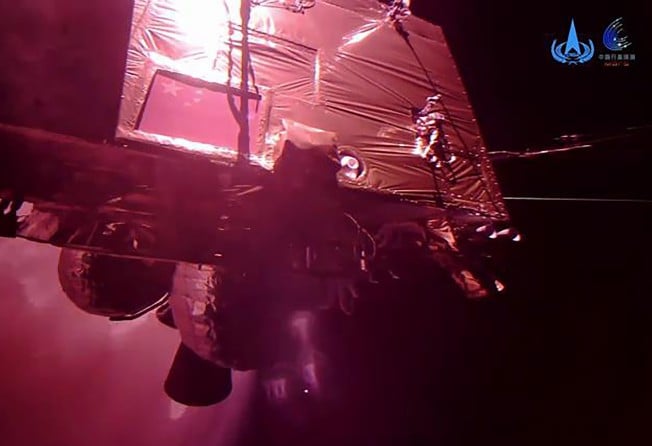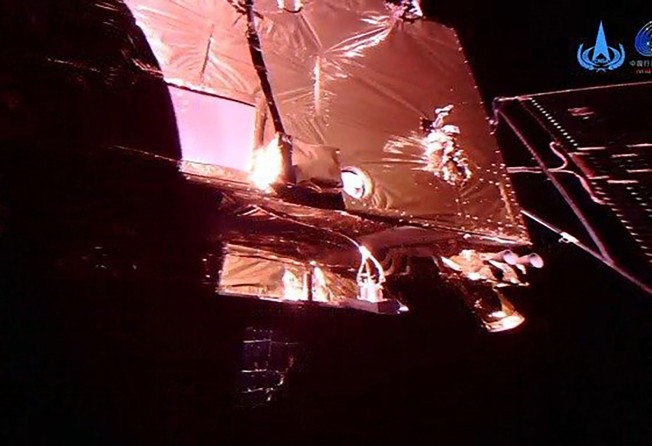China’s Mars mission: Tianwen-1 orbiter uses ‘selfie stick’ to capture ice caps on red planet
- Space agency publishes videos of its spacecraft against backdrop of polar caps made from a mixture of frozen carbon dioxide and water
- By Monday the Zhu Rong rover had driven more than 1.5km on the planet’s surface

China has published videos showing its Mars orbiter Tianwen-1 circling above the northern ice caps of the red planet taken using its “selfie stick” on Monday, the eve of Lunar New Year.
In a pink-tinted video, the spacecraft can be seen flying against a landscape sprinkled with frost patches, which the China National Space Administration (CNSA) identified as ice caps.
Unlike the ice on the Earth’s polar regions, Martian ice is a mixture of frozen carbon dioxide and water.
The video also shows a moving shadow cast by the sun as the solar wings of the orbiter rotate.
The orbiter is equipped with an extendable arm to monitor the key components on its surface, according to the CNSA, which said its engine, propellant tank and attitude control engine were in sound condition.
The “selfie stick” is made of a shape memory material that unfurls straight to 1.6 metres (5.2 feet) long when it reaches a certain temperature after entering Mars’ orbit. The arm, which has a camera attached at the end, was folded before launch.
The Tianwen mission – whose name translates to “heavenly questions” – is a milestone for China’s ambitious space programme.
It was launched on July 23, 2020, and went into orbit around Mars seven months later. In May last year Zhu Rong, named after the Chinese god of fire, landed on the planet.
The space agency said both the Tiawen-1 orbiter and Zhu Rong rover were in “good condition”.
The rover had driven more than 1.5km (0.9 miles) on the Mars surface in 255 Martian days by Monday. A Martian day is about 40 minutes longer than a day on Earth.
The feat means China is only the second country after the United States to successfully land an operating spacecraft on Mars.

Its mission is to explore the surface and geology of the planet as well as its magnetic field, soil composition and atmosphere.
Zhang Rongqiao, chief designer of the Tianwen-1 mission, said China was also working on another mission – likely to be known as Tianwen-2 -to collect rock samples from the red planet and return them to Earth in 2030.